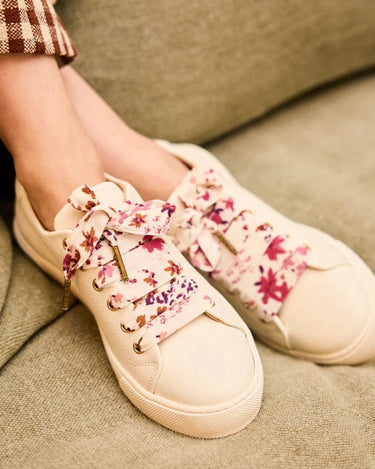How Does AI Affect Sustainable Fashion?
Artificial intelligence is impacting - and changing - the world as we know it. Industries across the spectrum are affected by it, and there really is no escaping these technologies seeping into most aspects of our lives. You're probably using AI more than you know: from asking ChatGPT to pen your dating profile bio to talking to an online store's customer-service bot, most of us are interacting with AI in one way or another. But is this technology a friend or foe to sustainable fashion? The answer to that question is somewhat complicated.
By Sascha Camilli writer, speaker, activist, and vegan fashion expert.
Artificial intelligence, at its core, is a computer's ability to learn and perform tasks that have previously been reserved for human intelligence. As a very versatile tool, artificial intelligence can affect many things both positively and negatively, including ethical fashion. Its wide-reaching capacities (which are always evolving) have the potential to both advance and hinder sustainability.
Material choice
Starting with the positives, AI has the capacity to analyse supply chains and production processes to favour sustainable production. It can help with material selection by evaluating the impact of different textiles, resulting in more planet-friendly choices. Ethical-fashion pioneer Stella McCartney has partnered with Google for a new process using AI to map supply chains to assess the impact of material use. "At Stella McCartney, we have been continuously focusing on looking at responsible and sustainable ways to conduct ourselves in fashion – it is at the heart of what we do," said McCartney herself about the partnership. "We are trying our best – we aren’t perfect, but we are opening a conversation that hasn’t really been had in the history of fashion.”
Improving production and reducing returns
AI can also helps streamline supply chain data and analyse production processes to help minimise waste of water, chemicals, and resources for a more sustainable result. It can also hinder companies from producing too many of a certain item (through evaluating consumer demand) to avoid unsold items going to landfill. Furthermore, using AI models can also help reduce the number of returned items. Companies such as Mirrorsize, which more accurately showcase how a garment will look on a customer, claim they can reduce returns by as much as 50%. Start-ups like Fairly Made also rely on AI to improve traceability in fashion supply chains and reduce waste, working with eco-minded brands such as Ganni.
Minimising waste
And speaking of waste - textile waste is a massive issue in the fashion industry, and artificial intelligence is working to address it. AI textile company Smartex has developed camera-based systems that detect defects in fabrics and allow factories to produce less waste. In this way, Smartex - a company backed by H&M and Amazon - claims to have prevented over one million kg of textiles from having been discarded. London-based start-up Zerotec is also working to reduce textile waste by assessing different ways to cut the fabric in the manufacturing process by calculating the percentage that would be wasted with different cuts. London College of Fashion graduate Nicholas Betts, who founded the start-up, said to East London Lines: "“You’re asking yourself ‘could I do a little bit better than I have already done?’ And that, I think, is quite powerful.”
Overconsumption
Powerful as AI might be, it doesn't always use its powers for good. Textile waste, the very problem that the aforementioned innovations are trying to address, is mainly rooted in our current culture of overconsumption - and at times, artificial intelligence systems can amplify that culture. Through extremely accurate trend forecasting, AI can make marketing more personalised, thus increasing shopping. AI can also make it easier for companies to churn out a large number of collections, further fuelling the throwaway culture that has led to the massive numbers of textiles sent to landfill. One such example is fast-fashion giant Shein, which uses AI-powered machine learning applications to determine customer preferences to predict demand. These processes sped up its already fast production even more, leading to Shein becoming the leading polluter in fashion. Fellow ultra-fast retailer Temu is also relying on AI to tailor messages to consumers it deems likely to make a purchase - thus increasing likelihood of shopping. "AI enables fast fashion to become the ultra-fast fashion industry, Shein and Temu being the fore-leaders of this,” said Sage Lenier, the executive director of climate organisation Sustainable and Just Future, to Wired. “They quite literally could not exist without AI.”
Energy use
Of course, using any AI comes with concerns for the energy usage involved. Experts are in fact warning against the use of generative AI for fashion - training and running AI models is highly energy-intensive, with increases in energy demand being driven by the rise in artificial intelligence use. Renewable sources are leading the way, however different energy sources will be needed to keep powering the servers responsible for everyday AI use, including that which is done by fashion companies. In the US alone, power use is expected to rise by 6% in 2026 compared to 2022, which is partly due to the wide and rapid spread of AI models.
Beauty standards
The use of models created by AI is on the rise, with companies such as Guess eschewing human models in favour of artificially created ones. As sustainable fashion is a strong voice for diversity and a healthier body image, the presence of AI models, created to meet today's rigid beauty standards, may set progress back. In fact, the creators of Seraphinne Vallora, the AI company used by Guess for its ad, say they've yet to experiment with different body sizes, as "the technology is not advanced enough for that." Skincare company Dove researched biases in AI in 2024, finding that prompts to create an image of "a beautiful woman" only produced pictures of European-looking women, pointing to significant bias. It also found that AI imagery pressured one woman in three to alter her appearance.
An extremely diverse tool such as artificial intelligence can have many differing impacts on the world of fashion. There is no denying that artificial intelligence comes with big advantages to sustainability, but if we are to use it responsibly, then there is also a lot to watch out for.
By Sascha Camilli
About Sascha
Sascha Camilli is a vegan fashion writer, speaker and activist. Her book Vegan Style is out now on Murdoch Books. For more about Sascha, you can read our interview with her or read her newsletter Kind Of Wild. You can also follow her on Instagram.
Cover image by Giuseppe Argenziano. Second photo by Count Chris. Final photo by Catgirlmutant. All via Unsplash.
For more great content like this in your inbox, sign up to our newsletter, and save 10% off your next purchase, plus great savings throughout the year.
Related Articles

Vegan Christmas Gifts For Him

Vegan Christmas Gifts For Her

















































































































